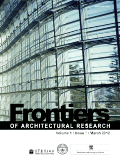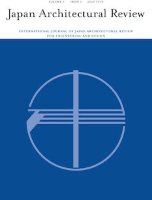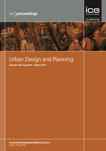
Teka Komisji Urbanistyki i Architektury
metrics 2024
Navigating the Challenges of Urban Development Together.
Introduction
Teka Komisji Urbanistyki i Architektury is an esteemed journal published by the Polska Akademia Nauk (Polish Academy of Sciences), dedicated to advancing the fields of urban planning and architecture. With its ISSN 0079-3450 and E-ISSN 2450-0038, this scholarly publication plays a pivotal role in disseminating innovative research, critical analysis, and theoretical advancements related to urban development and architectural design. Although not currently available as an open-access journal, it remains essential for researchers, professionals, and students eager to stay informed about contemporary challenges and solutions in the built environment. The journal emphasizes high-quality, peer-reviewed articles that stimulate scholarly debate and foster interdisciplinary collaboration among contributors from diverse academic backgrounds. Consequently, it has emerged as a vital resource for developing urban planning policies and architectural practices, both in Poland and globally.
Metrics 2024
 -
- 0.10
0.10 0.10
0.10 -
-Metrics History
Rank 2024
JCI (Web Of Science)
Quartile History
Similar Journals

Frontiers of Architectural Research
Connecting Culture, Environment, and Technology in ArchitectureFrontiers of Architectural Research, published by KEAI PUBLISHING LTD, stands at the forefront of interdisciplinary scholarship, addressing contemporary challenges in the fields of architecture, urban studies, building and construction, and archaeology. Since its establishment in 2012, this open-access journal has rapidly gained recognition, achieving prestigious rankings in the 2023 category quartiles, including Q1 placements in both Architecture and Archaeology. With an impressive Scopus rank of #5 out of 354 in Archaeology and #10 out of 189 in Engineering - Architecture, it demonstrates its significant influence and contribution to advancing architectural research. Frontiers of Architectural Research embraces a broad scope that fosters innovative discourse and practical solutions, catering to a diverse audience of researchers, professionals, and students keen on exploring the intersection of culture, environment, and technology. By ensuring immediate access to research findings, the journal not only enhances the visibility of scholarly work but also encourages collaborative dialogues that shape the future of architectural practice.

Japan Architectural Review
Championing open access for global architectural discourse.Japan Architectural Review is a premier open-access journal published by WILEY, dedicated to advancing the fields of architecture, environmental engineering, and modeling and simulation. Since its inception, this journal has emerged as a critical platform for disseminating innovative research, offering insights into the latest trends and challenges facing the built environment and sustainability practices. With an impact factor reflecting its growing influence, especially in the Q2 category of Architecture and notable rankings in environmental engineering and modeling disciplines, it serves as an essential resource for researchers, professionals, and students alike. The journal's commitment to open access since 2018 has further enhanced its reach, making high-quality research accessible to a global audience. Spanning an important timeline from 2019 to 2024, the Japan Architectural Review facilitates a collaborative discourse among scholars, encouraging innovative solutions to contemporary architectural challenges.

Urban Science
Exploring the Complexities of Urban LivingUrban Science, published by MDPI in Switzerland, is a pioneering open access journal that has been serving the academic community since 2017. With a robust focus on understanding urban environments through various interdisciplinary lenses such as Environmental Science, Geography, Planning and Development, and Urban Studies, this journal aims to advance knowledge on the complexities of urban living and the challenges that modern cities face. Recognized for its impact, Urban Science holds prestigious rankings, including Q1 in Urban Studies and Q2 in multiple relevant categories. Its presence in leading databases like Scopus, where it stands among the top percentile ranks, underscores its contribution to critical dialogues in urban research. The journal’s commitment to accessibility, targeted toward researchers, professionals, and students alike, fosters an inclusive platform for disseminating innovative ideas and solutions necessary for sustainable urban development.

Proceedings of the Institution of Civil Engineers-Urban Design and Planning
Shaping the Landscape of Urban PlanningProceedings of the Institution of Civil Engineers-Urban Design and Planning is a leading scholarly journal published by EMERALD GROUP PUBLISHING LTD, dedicated to advancing knowledge and innovation in the fields of urban design and planning. With an ISSN of 1755-0793 and E-ISSN 1755-0807, this journal serves as a vital platform for researchers, professionals, and students to disseminate impactful studies and findings. It boasts impressive rankings, including Q1 in Architecture and notable positions in Civil and Structural Engineering and Urban Studies, underscoring its significance in the academic community. The journal's scope encompasses a diverse array of topics relevant to urban environments, encouraging interdisciplinary dialogue and exploration. Although it operates under traditional access, its contributions are invaluable, reflecting the latest developments and challenges within urban planning practices. Published regularly since 2009, the Proceedings of the Institution of Civil Engineers-Urban Design and Planning is vital for those seeking to enhance their understanding of sustainable urban development and design methodologies, making it a critical resource in its fields of study.

Boletin Academico-Revista de Investigacion y Arquitectura Contemporanea
Pioneering Research at the Intersection of Art and Architecture.Boletin Academico-Revista de Investigacion y Arquitectura Contemporanea is a distinguished journal published by SIELAE & UNIV CORUNA, Fac Filologia, focusing on the interconnectivity of contemporary architecture, cultural studies, and visual arts. With an E-ISSN of 2173-6723, this open-access publication serves as an essential resource for researchers, academics, and professionals eager to explore innovative perspectives and methodologies in these dynamic fields. Spanning a commendable period from 2016 to 2023, the journal demonstrates a strong academic footprint, ranked in the Q2 category for both Architecture and Cultural Studies, and holds a prestigious Q1 ranking in Visual Arts and Performing Arts. With Scopus rankings reflecting its growing influence—particularly in Visual Arts and Architecture—Boletin Academico delivers a platform that is not only academically rigorous but also culturally relevant, encouraging discourse that shapes the future of contemporary architectural and artistic practices. The journal’s commitment to open access further enhances its appeal, ensuring that groundbreaking research is readily available to an extensive audience.

Archnet-IJAR International Journal of Architectural Research
Advancing architectural innovation through interdisciplinary dialogue.Archnet-IJAR International Journal of Architectural Research serves as an esteemed platform within the field of architecture and urban studies, published by Emerald Group Publishing Ltd. With an impressive impact reflected through its Q1 category rankings in both Architecture and Urban Studies, this journal highlights cutting-edge research and innovative practices spanning diverse architectural disciplines. The journal focuses on facilitating interdisciplinary dialogues, making it a vital resource for researchers, students, and professionals keen on advancing their understanding of architectural theories and urban design. With its commitment to quality, evidenced by high scores in various Scopus rankings, including a rank of 9th in Visual Arts and Performing Arts, Archnet-IJAR aims to publish work that not only challenges conventional boundaries but also enriches practical applications in the built environment. Its open-access model ensures wider dissemination of knowledge, fostering collaboration and growth within the international architectural community.

Open House International
Illuminating Contemporary Challenges in Urban DevelopmentOpen House International is a distinguished peer-reviewed journal that serves as a vital resource in the fields of Architecture, Urban Studies, and Geography, Planning and Development. Published by Emerald Group Publishing Ltd, the journal circulates valuable insights and research findings that address contemporary challenges and innovations within urban environments. With an impressive 2023 Scopus ranking that places it in the Q2 category in Architecture and Q3 in Geography, Planning and Development, the journal is recognized for contributing significantly to scholarly discourse. Although it follows a traditional access model, the journal's commitment to curating high-quality content remains paramount. As it transitions into a new decade of publishing, from 2007 to 2024, Open House International continues to attract submissions that push the boundaries of knowledge in urban and architectural studies, engaging researchers, professionals, and students alike in the vibrant dialogue on the built environment.

A + U-ARCHITECTURE AND URBANISM
Illuminating the Future of Urban Design and ArchitectureA + U - ARCHITECTURE AND URBANISM, published by A & U PUBL CO LTD, is a prominent Japanese journal that focuses on the interdisciplinary nexus of architecture, urban studies, and the visual arts. With an ISSN of 0389-9160, this publication aims to provide a platform for innovative research and discourse in the challenging and ever-evolving landscapes of architecture and urbanism. Despite being placed in Q4 of various categories according to Scopus ranks, this journal holds significance in fostering global dialogues on urban transformations and design strategies through its diverse range of articles. The journal emphasizes not only the aesthetic dimensions of architecture but also the social and cultural implications of urban development, thereby appealing to a broad audience of researchers, professionals, and students dedicated to these fields. With a commitment to enriching the academic community, A + U serves as a vital resource for those seeking to explore and contribute to the future of urban spaces and architectural practices.

Techne-Journal of Technology for Architecture and Environment
Integrating Technology with Environmental ConsciousnessTechne - Journal of Technology for Architecture and Environment, published by FIRENZE UNIV PRESS, is an important academic platform that bridges the gap between technology and architecture while addressing the evolving environmental challenges of our time. Established in 2015, this journal provides a forum for innovative research and discussions that critically examine the intersections of architecture, urban studies, and construction engineering. With an impact factor indicative of growing recognition in its field, Techne encompasses a broad spectrum of studies, marking its presence in the Q3 and Q4 quartiles across various categories, including Architecture, Building and Construction, Education, and Health (Social Science). The journal is indexed in Scopus with varying ranks, showcasing its increasing relevance and influence among contemporary literature. Although it operates under a non-open access model, the journal ensures that its scholarly contributions are accessible through institutional connections, making it a vital resource for researchers, professionals, and students seeking to advance their knowledge on the integration of technology in shaping sustainable architectural practices.

ACE-Architecture City and Environment
Fostering Collaboration for Sustainable Urban FuturesACE-Architecture City and Environment, published by Universitat Politècnica de Catalunya in Spain, serves as an essential repository for innovative research and insights that intersect the fields of architecture, urban studies, and environmental planning. Since its establishment as an Open Access journal in 2006, it has facilitated widespread accessibility to scholarly work, fostering a collaborative and inclusive academic community. The journal has consistently maintained a prominent standing within its field, reflected in its 2023 Quartile rankings—, Q3 in Geography, Planning and Development, and Q2 in Urban Studies. With a publication horizon extending from 2011 to 2024 and an impressive Scopus ranking among peers, it offers a comprehensive platform for researchers to disseminate their findings and engage with contemporary challenges in urban environments. ACE is pivotal for professionals and students alike, striving to shape the future of sustainable architecture and urban planning through rigorous scholarship.